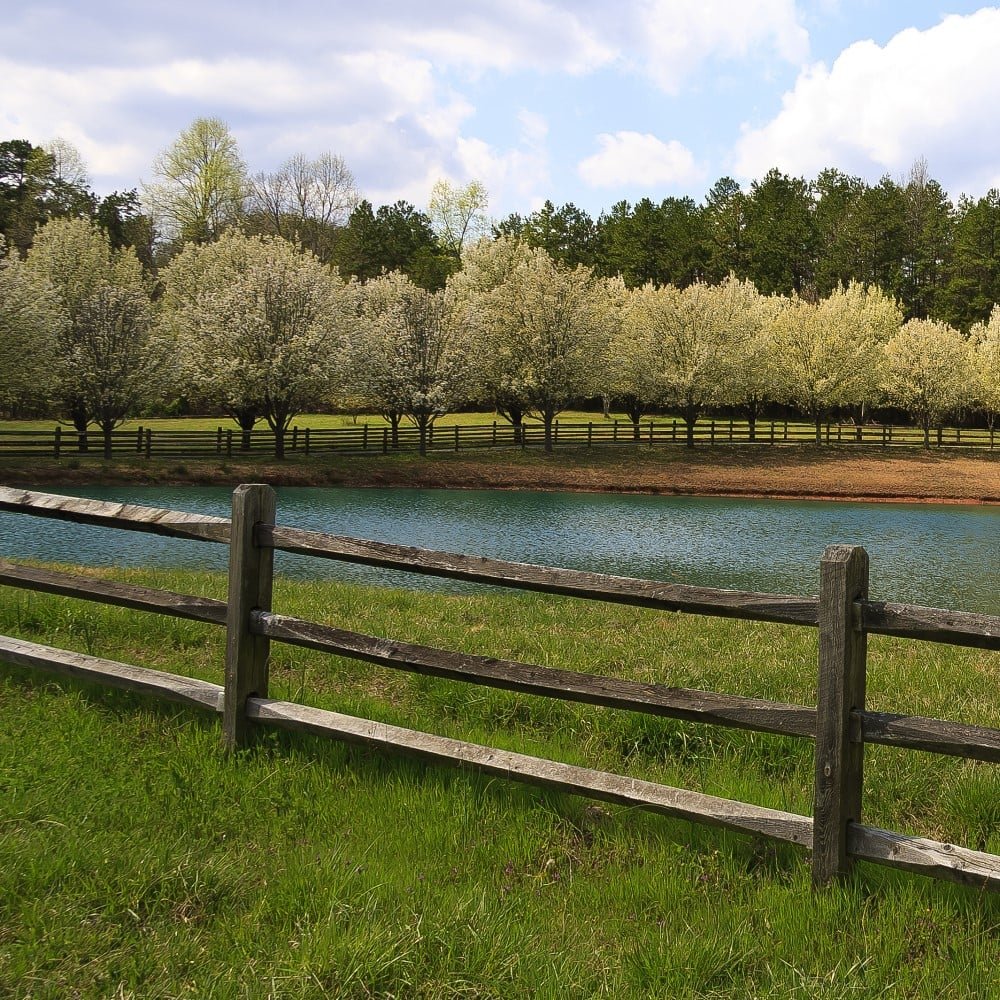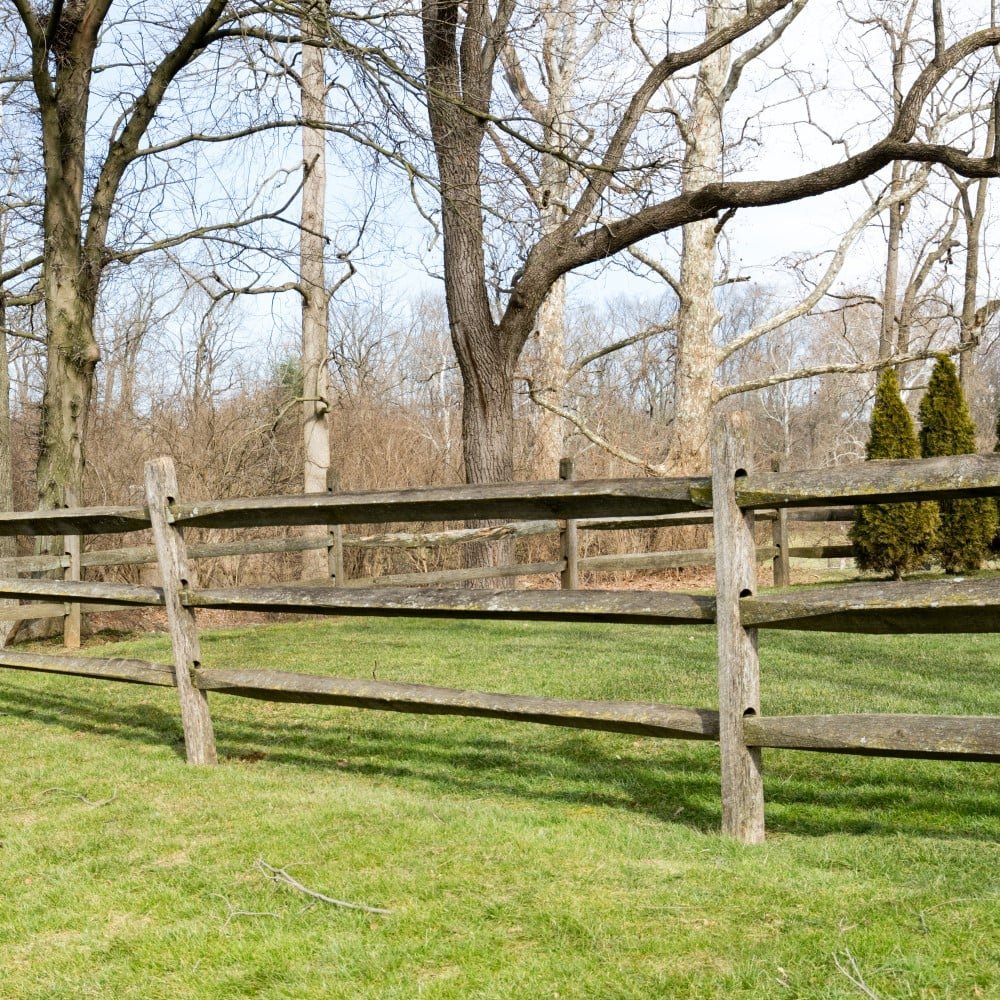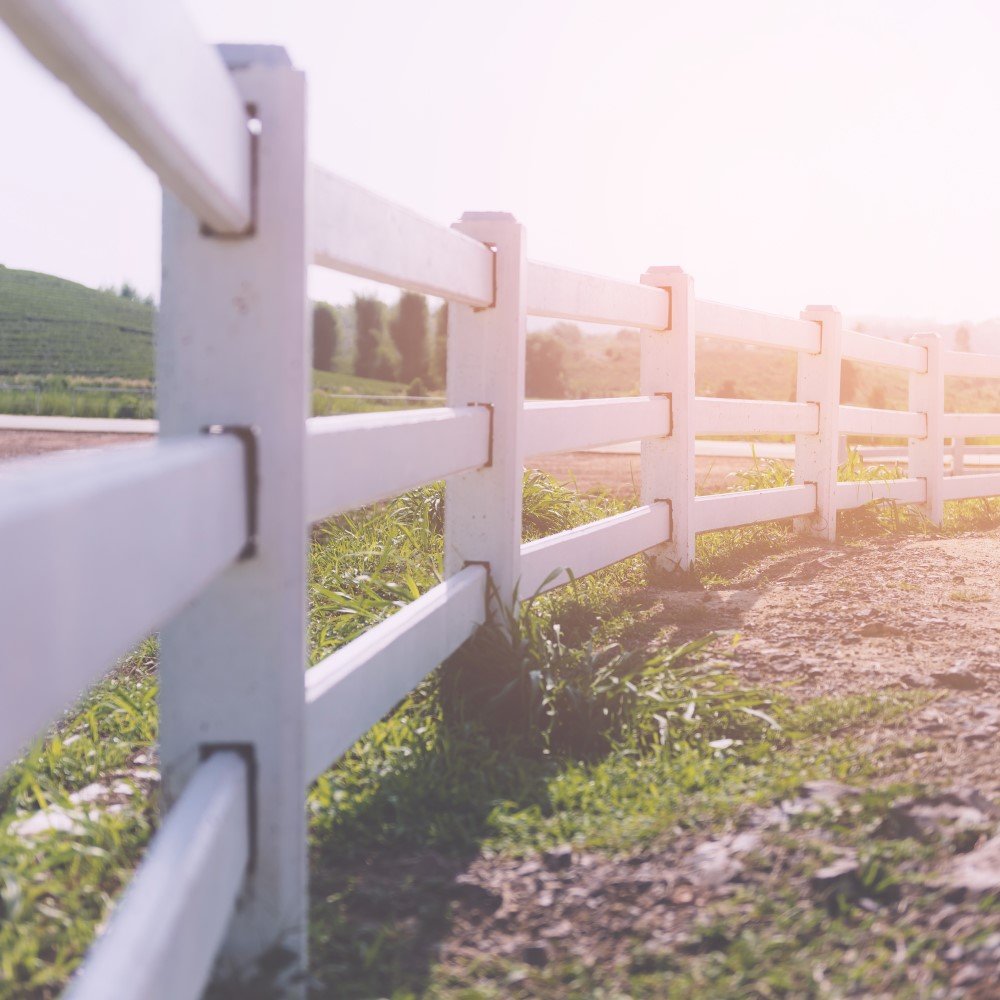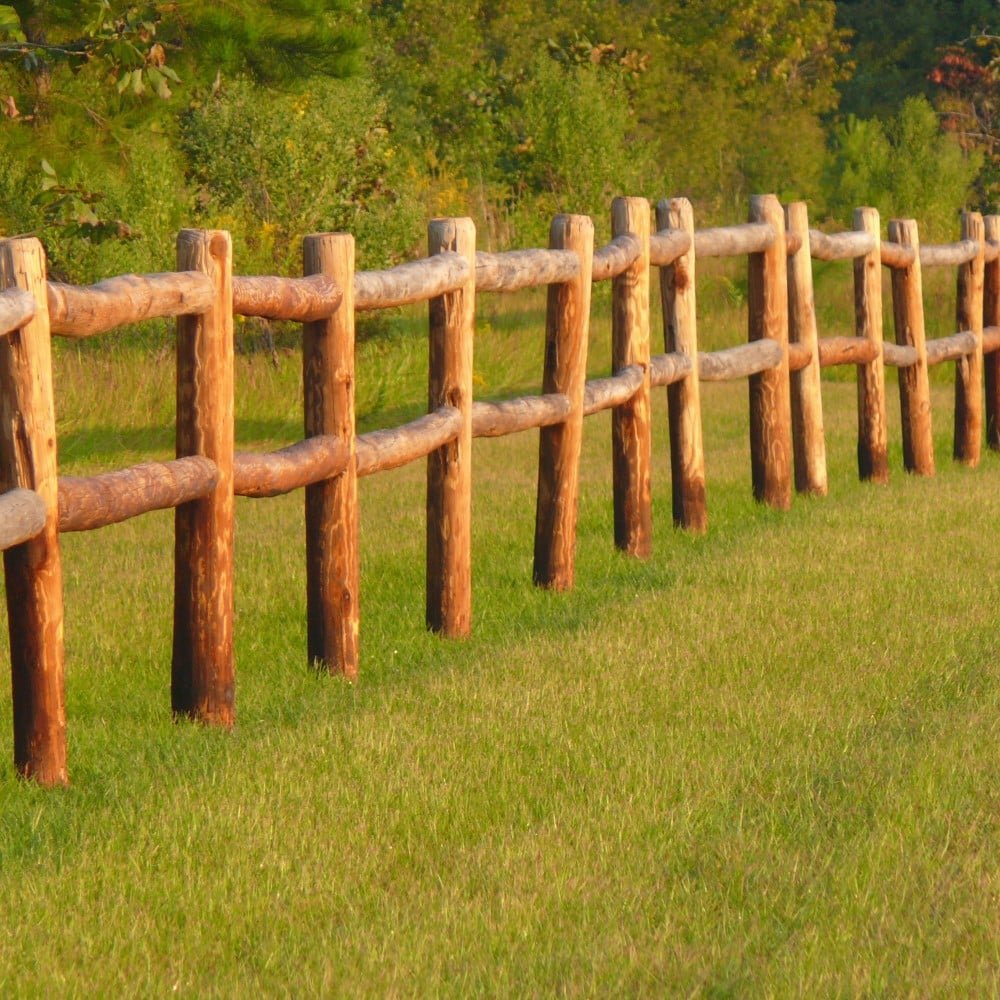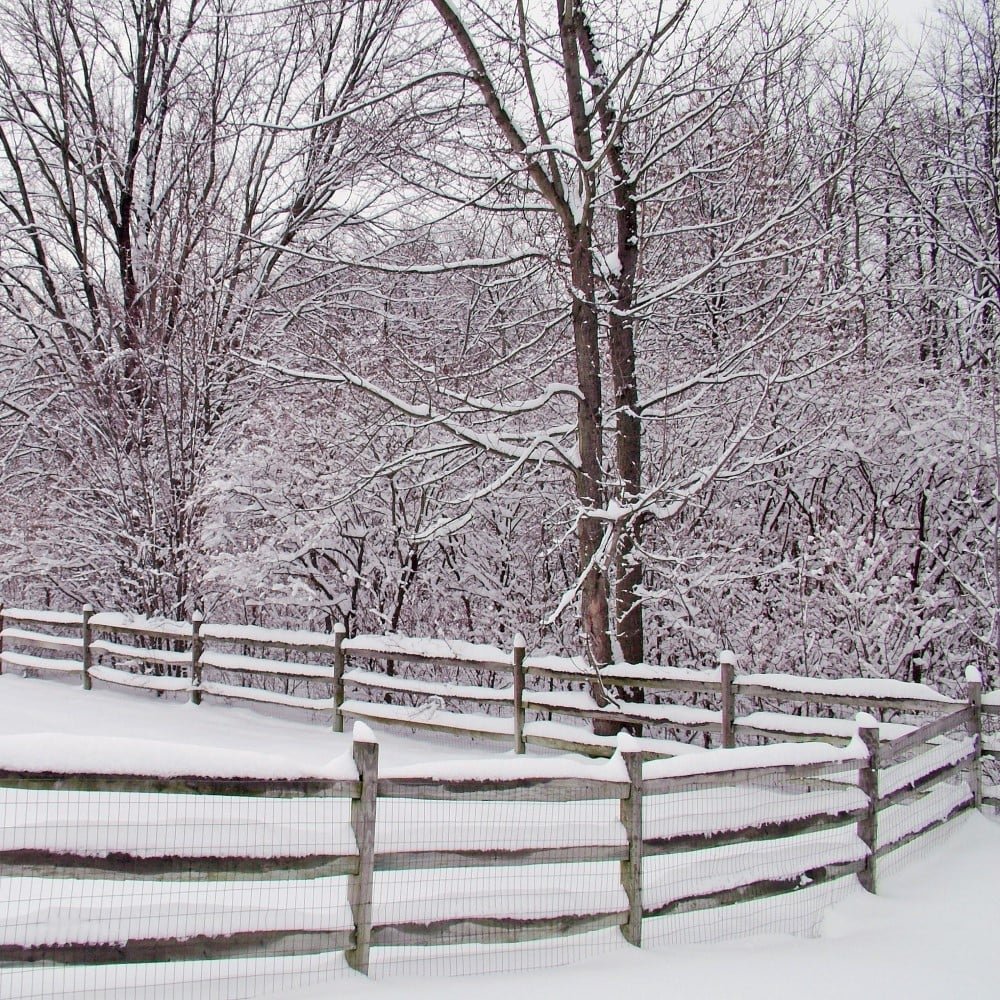The In’s and Out’s of Split Rail Fencing
The first step to learning about any product is being educated on what the product is and the different ways you can use it.
What is a split rail fence? Split rail fence is a simple and rugged fence style that has been around for hundreds of years. Although split rail fence basics are standard, a split rail fence can consist of wooden posts that have two or three rails. You may come across some variations, but this is the most common.
-
The typical split rail fence is configured as mentioned above. However, depending on the size and the use it can be altered. Split rail fence posts are rarely capped because it is such an uninvolved fence style. The fanciest that a split rail fence can get is to use rounded posts and rails, which have a cleaner look.
Crossbuck Split Rail Fence
You can give your split rail fence an updated look by crossing the rails. This design style has the top and bottom rail in an “X” shape. From a distance, this almost gives a zig-zag look.
Stacked Split Rail Fence
This layout incorporates the rails being stacked on top of each other without posts.
-
All traditional split rail fences are made of wood and typically with cedar, oak, and pine. You can leave the wood natural without stain to weather on its own or with stain. Split rail fence ages gracefully and still looks great even when it turns grey. If you want to further enhance the rustic look of your split rail fence, you can use rough-hewn boards or even logs with bark. You can still apply a clear insect repellent and it will not change the natural color.
-
Vinyl split rail fence is readily available. If you are looking for the style of a split rail fence, but with a more contemporary clean design, this is your best bet. Vinyl split rail fence is just as sturdy as wood split rail fence and is maintenance-free. The panels are pre-fabricated, so topographical variation in your landscape will not work with a vinyl split rail fence.
-
Homeowners use a split rail fence for many of the same reasons that someone uses a chain link.
Split rail fence is an easy way to mark your property line without blocking the view. It is also economical for larger properties that have a lot of acreages.
Although it does not work for small animals, split rail fence is useful to enclose large animals and dogs. It is most commonly used for horses and livestock.
Split rail fence does not provide any privacy, but will decoratively border your yard and give it definition. A split rail fence can also be used around a garden because it keeps it guarded but does not close to your yard.
-
Some people make the mistake of thinking that it is difficult to incorporate a gate with a split rail fence. This is not true! In fact, because of the configuration, you can add a gate anywhere in the fence line you like. Furthermore, it is not uncommon to see gates made of different materials added to a split rail fence. Metal gates are becoming quite popular to pair with a split rail fence.
As you can see, the split rail fence is an American staple and has remained popular. It is no longer just for farms and ranch.
Is Split Rail the Only Option?
While split rail fencing is a great option when it comes to fencing for your home, of course there are other alternatives to fencing and we want you to be educated on every option so you can choose the best option for you and your family. Let us give you a little bit of information on your alternative options!
Basic Cedar Privacy Fencing
This is the most common type of fence you will see in the neighborhoods that you drive through on a daily basis. The most common style of fence is constructed with 1x6x6 pickets, 2×48 rails, and 4x4x8 posts to create an aesthetically pleasing and functional line around your property. Some businesses or contractors will use spruce, pine or fir pickets, but we only sell cedar pickets because they are best suited for Colorado’s dry climate. A fence built with treated pine pickets and posts will not last in Colorado’s climate and will warp, crack and twist within a few years of installation. There are many ways to add a unique twist to your privacy fence. Some options include using decorative top caps, a horizontal fence or a shadow box fence.
Split Rail Fencing
A split rail fence was one of the earliest types of fence that society used. It was cheap to manufacture, easy to install and was a great option for people with a lot of lands to fence in. Originally, we mainly saw split rail fencing is used in the countryside, but we are seeing more people in suburban areas using split rail fence in business districts and on residential properties. Some popular reasons to use split rail fencing are its low cost, it’s long-lasting, easy to install and rustic looking. No nails, fence staples, or other materials are needed for installing a split rail fence, which helps to keep the cost low. When comparing the cost of our split rail fencing, keep in mind that we offer a different product than the big box stores. We carry both 2 and 3 rail systems in stock. Secondly, the big box stores only stock smaller 8-foot “pony” rails. We stock standard size 10-foot rails that are thicker and stronger.
Ranch Rail Fencing
A Ranch Rail Fence also goes by other names such as Horse Fence, Farm Fence, Field Fencing or Board Fence. It is becoming a very popular option in various types of settings. Ranch Rail fencing is a good alternative to a standard privacy fence and it will look much sleeker than a split rail fence. A typical Ranch Rail Fence comes in a two, three or four rail system and will typically be made with 4×4, 4×6 or 6×6 cedar posts and nominal 2×6 or 2×8 cedar boards for its rails. Some benefits to using ranch rail fencing are that it’s cost-effective, has a clean look, is easy to clean and install and will last a long time. You also get more design choices when installing a ranch rail fence when compared to a split rail fence. Split Rail and Post & Dowel fences limit you to designs that utilize the pre-drilled holes in the posts, whereas you have the freedom of design with ranch rail fencing.
Post and Dowel Fencing
Post and dowel fencing also goes by the names of Western Rail Fencing or Pressure Treated Fencing. Its most distinguishing feature is its greenish hue, which comes from the chemical treatment on the pine logs. The chemical treatment helps prevent rot and decay in this style of fencing. Many people love to post and dowel fencing because of the uniform look that it provides. When deciding between post and dowel fencing versus split rail fencing, take into consideration that post and dowel have chemical protection against rot and decay whereas split rail fencing has natural oils and resins that prevent rot and decay. A post and dowel fence can last 10-15 years depending on if you maintain the fence well and the type of climate that you live in.
Of course, we are going to keep talking about why split rail fencing is the best option and why it is the best for you and your home. Aside from the different options of fencing, split rail fence was one of the earliest types of fencing used and is becoming one of the most popular kinds of fencing. It is super easy to build and maintain, and the price tag on it doesn’t give you a heart attack when reading it. Since split rail uses little material compared to other methods of fencing, it was the go-to fence option for farmers who had a lot of lands. In the past, you most commonly saw split rail in the country, because fences in the city were used for the purpose of security and privacy. Split rail fencing was created to show property lines with a rustic and simple look. Nowadays, this is something that homeowners now want more of at their suburban homes, which is why it is making a comeback and we are seeing it more and more in the city. You will commonly see split rail as the standard in new housing developments and in shopping centers to create barriers between the street and buildings.
The Top Reasons to Build
Split Rail Fencing
Split Rail Fencing Costs Less: Split rail is super easy to build, and very little material is needed. Typically, you don’t even need nails or screws to secure the rails together. Because of the low price tag, this makes split rail fencing the prime option for homeowners who are looking to install a fence on a budget.
Split Rail is Long Lasting: Split rail lasts for years and needs little to no maintenance, meaning you can install it and never have to worry or think about it ever again. For people with a crazy busy life and who are short on time, split rail fencing is the way to go.
Split Rail Fencing is Easy To Install: To install the split rail, all you have to do is place the rails in the pre-cut holes that hold them. The only real labor that is needed is to dig and set the posts themselves. Once this is done, no securing with screws or nails is necessary, unless you want extra provided durability.
The Appearance Gets an A +: The trend right now is everything rustic. Split rail fence gives an authentic rustic look, with very little labor or materials needed.
Split rail is easy to find at any lumber or fencing company. What sets Rocky Mountain Forest Products apart from other companies is that we carry multiple different rail systems. You have the option of having two rails or 3 rails across your entire fence. Most companies do not offer this, which means you have to custom order it. That can often take more time and costs more than just using the split rail that they have in stock. We also carry thicker rails, which means your fence will turn out more durable and stronger than others.
Colorado Split Rail Fence
Colorado is the perfect state to have split rail as your fence because of our climate. In our climate, your split rail fence is expected to last up to 20 years with no issues. That is a crazy amount of time for a fence to last, with no maintenance required.
Split Rail for Parents or Pet Owners
One of the downsides of having split rail is that the security for smaller animals can be a concern, but luckily there is an alternative. You can get split rail with weld wire, which allows for your smaller animals and children to be safe, no matter what. It does take some extra work because the welding wire has to be attached to the rails, but in the end, it is worth it! Of course, there is also the traditional option for split rail that has 2-3 rails, with all the bells and whistles. If you have larger animals like horses, cows, or pigs on your ranch split rail will easily keep them in their places. For homeowners who don’t have any animals and just want property security, split rail fencing is also perfect! No matter the home-style, layout, or size- split rail fencing can cover all the bases creating a stress-free, low cost, and easy to install fence project for anyone.
Once you have a split rail fence and your installation is complete, there are many different things you can do with you split rail fence to decorate it and make it officially a part of your home. This not only makes your split rail look as if it is a part of your home, but it also gives your home’s curb appeal a new look.
The Different Things You Can Do with Split Rail
Once your split rail fence is designed, installed, and officially complete, you can now get into the fun stuff! Decorating your yard will enhance the overall design and style of your backyard space. It’s time for the fun part! You are adding flowers, seating areas, birdhouses, pavers, and much more. Adding decorations to your backyard can make your space feel more inviting and cozier.
-
The first thing that comes to mind when you think about decorating an outdoor space is landscaping. Trees, mulch, rocks, and flowers are the perfect way to liven up your backyard. Plant flowers that run alongside your split rail fence to not only give you some extra privacy but to help make your fence stand out. You can also plant trees or vines that stand aside from the posts the hold the rails together, creating the illusion that your fence is all plants. Once the vines grow and continue to do so, they will eventually drape along the side and stretch the whole distance of the fence in time. Using mulch and rock underneath your split rail fence will help keep animals in and unwanted animals out, by creating a barrier with less room to get in through. Plus it leaves a beautiful aesthetic.
-
When you first install your split rail fence and are designing it, you can implement a portion of it that is boxed in where you can use it as a gardening space. You can use this space to plant and grow flowers, fruits, vegetables, and herbs. Of course, to keep animals out, you can put weld wire across the portion of your split rail fence that is your garden, if you choose not to have it along the whole fence. You can even use your leftover rails and posts from your fencing job as planter boxes or dividers in the garden to help keep the crops separated. With a little bit of acrylic paint or paint markers, you can create some designs and add color to your yard as well as a label where you planted what fruits and veggies, so they are easier to find!
-
A unique way to add some wildlife in your backyard without putting your little ones or pups in danger is to build a birdhouse that can sit alongside your split rail fence on the posts. This is an excellent opportunity to make a craft day for your kiddos and teach them a little bit about wildlife. There are plenty of different designs of birdhouses with some that have feeders on the sides, places for a small birdbath, and of course a space for the mama bird to lay her eggs and raise her chicks. Being able to watch the little birds in their daily life and having some extra decoration on your fence is the best of both worlds!
-
Some homeowners also choose to outline the front of their property with a split rail fence in the front of their house, which gives the ability to use the posts for your mailbox and nameplates. Most homes have their mailboxes in which you can put yours on a post within your split rail fence, rather than having to add posts in the front of your home, adding more clutter. The fun thing about mailboxes when you own a home is that you can decorate it and give your home a touch of your personality. Something that isn’t for everyone, but some people add to the front of their home is a nameplate with their last name listed and the year in which the name was established. These are both small ways you can utilize your split rail fence in a different way.
-
When it comes to the placement of the address numbers, you must put them in a place that is easy for people to see and identify. Your split rail fence usually runs right up to the end of your property line, which is the perfect place for your address numbers. They typically are on the front of the home close to the front door, but if you can place them closer to the street and more natural to identify, it would benefit you and your guests!
These are just a few of the ways you can spice up your split rail fence once it is installed, but your imagination is the only limit!
Conclusion
Our goal with this guide was to help you learn more about split rail fencing from the benefits, downsides, cost, and décor. Choosing a type of fence for your home can be very stressful and overwhelming, which is why we wanted to make it easy by isolating all the information in one article. If you are struggling to choose a fence style for your home, we recommend you use this guide and educate yourself on split rail and the alternatives. Once you know more, reach out to us or your local supplier to get more information on products and the process in which to get your home improvement completed.
At the end of the day, your home should be your place and should be designed to your liking. Exterior home improvements such as decks, fences, and landscaping are ideal when it comes to curb appeal and the value of your home. Give your home a touch of your style. We hope that this article helped you educate and give you some knowledge of fencing and choosing the right kind for your home. If you have any questions or want more information to give us a call!

